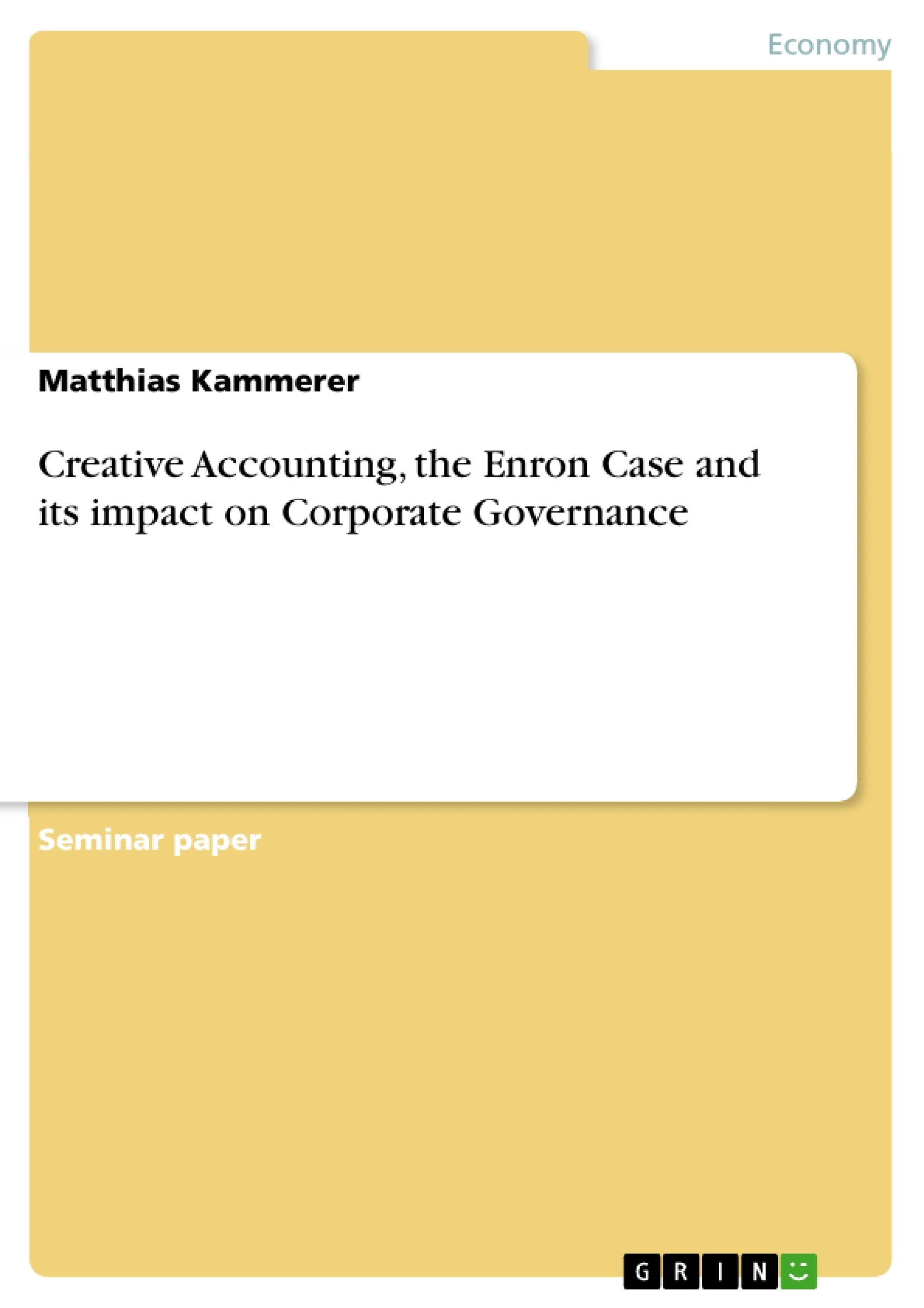In the last decades creative accounting and corporate governance emerged as common used terms in economical debates. In my assignment I want to point out the meaning and relevance of these concepts as well as to establish a relationship to the Enron case as one of the most prominent corporate collapses in recent years.
Document Summary
1. Preface
2. Creative Accounting
3. The Enron Case
4. Corporate Governance post Enron
5. Referencing List
6. Bibliography
1. Preface
In the last decades creative accounting and corporate governance emerged as common used terms in economical debates. In my assignment I want to point out the meaning and relevance of these concepts as well as to establish a relationship to the Enron case as one of the most prominent corporate collapses in recent years.
2. Creative Accounting
According to Jameson (1988) cited in Onono (2004:8) creative accounting can be defined as a process that deals with matters of accounting appraisal and conflicts between different ways of presentation of financial items and events. ‘This flexibility provides opportunities for manipulation, deceit and misrepresentation’.
Naser (1993:2) defines it as the conversion of financial data into what the ‘preparers’ desire, i.e. reinterpreting and ‘taking advantage of the existing rules’ to put the company in a better perspective for possible investors.
Due to the diversity of definitions it is preferable to find a consensus which is common to most of them. In my opinion it is best expressed by ‘window-dressing’ and reporting profits and asset figures in a way that is complimentary to the companies shareholders and investors (Specialinvestor.com, 2005)
Besides, as it is expressed by Onono (2004:7-8), creative accounting – although not fraudulent – is commonly seen by most of the writers as widely used but also ‘deceitful and undesirable’ because of misleading information.
As manifold as its definitions are the circumstances that enabled the existence of creative accounting techniques. On the one hand there are institutional reasons based on weak and feeble standard settings by the former Accounting Standards Committee (ASC) which had a substantial lack of authority (therefore it was replaced by the ASB in 1990 to partly overcome these handicaps). On the other hand a common set of accounting standards has to include a significant degree of flexibility to reconcile with the variety of different industries and the ‘mismatch between reporting and business cycles’, as Griffiths (1995:viii) suggests: ‘It is flexibility that feeds creative accounting’.
Besides, companies always try to satisfy the shareholders’ demand for steady growth and for a single ‘snapshot figure’ which allows an easy assessment of the company. That entices companies to embellish certain figures, especially profits and earnings-per-share (EPS). As a consequence of the imprecise nature of the standards there have always been possibilities and incentives to manipulate these numbers. (Griffiths, 1995)
According to Sutton (2000) the aims of these manipulations can be subdivided into four main categories:
- Reduce tax burden by reducing profits or increasing possible subsidies.
- Raise capital more cheaply, e.g. through better liquidity ratios.
- Increase the managers’ wealth, because their compensation is often linked to profitability by bonuses and other monetary incentives.
- Prevent offences against debt contracts by managing the key figures like profits, interest expense, debt and equity.
In particular the anglo-saxon system has been vulnerable to manipulation due to the high degree of flexibility and freedom of appraisal. It has been and it still is attractive for lots of companies to bend the rules for example to raise additional finance, hide financial risks, boost the profits or improve management performance. (Onono, 2004)
To give some examples for Creative Accounting practices that were commonly used in the past in my opinion Merger&Acquisition-accounting as well as the treatment of extraordinary items first have to be mentioned.
The latter contains the already mentioned desire for a single figure that makes an easy assessment of the company possible. The most important figure is earnings-per-share (EPS). It is so dominating that creative accounting is often also called earnings management.
(Sutton, 2000).
[...]
- Quote paper
- Matthias Kammerer (Author), 2005, Creative Accounting, the Enron Case and its impact on Corporate Governance, Munich, GRIN Verlag, https://www.grin.com/document/83236
-

-

-

-
Upload your own papers! Earn money and win an iPhone X. -

-
Upload your own papers! Earn money and win an iPhone X. -

-
Upload your own papers! Earn money and win an iPhone X. -

-
Upload your own papers! Earn money and win an iPhone X. -

-
Upload your own papers! Earn money and win an iPhone X.

